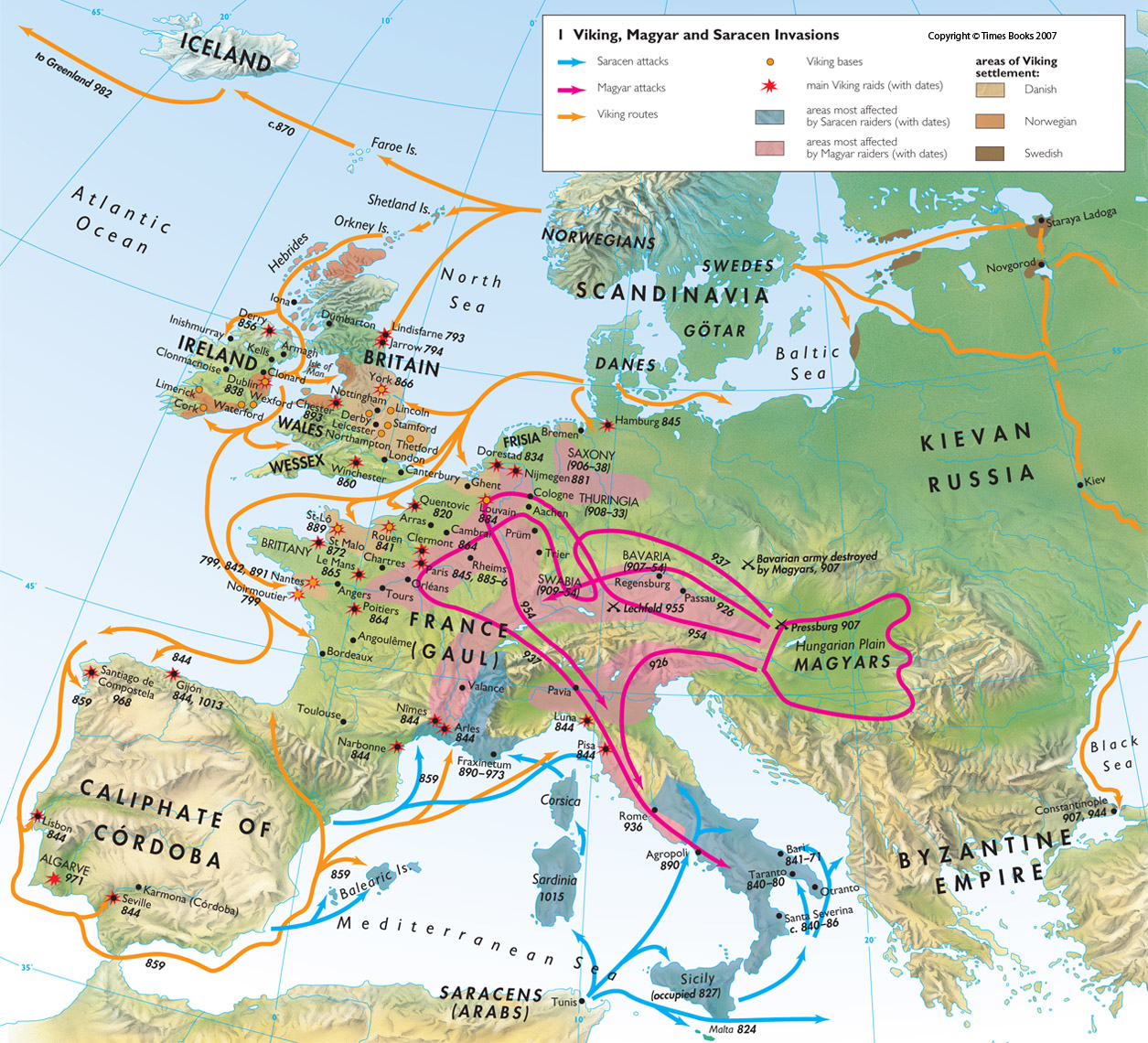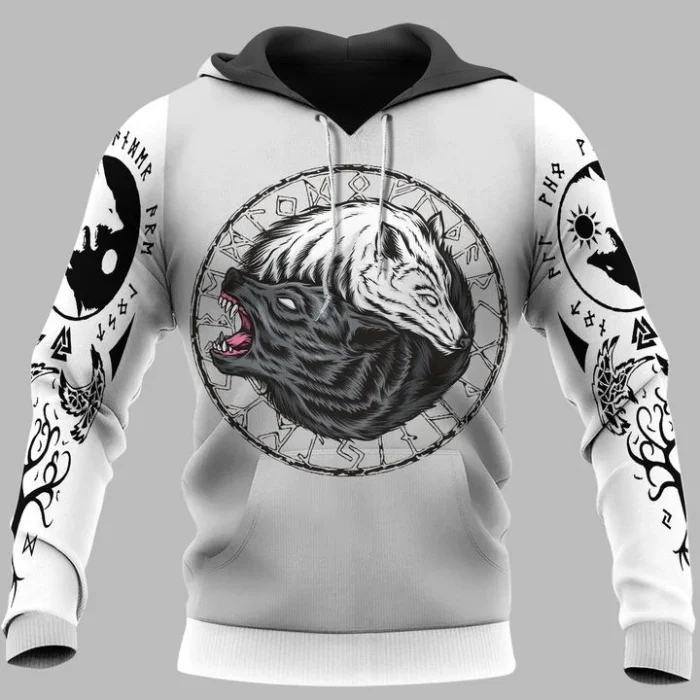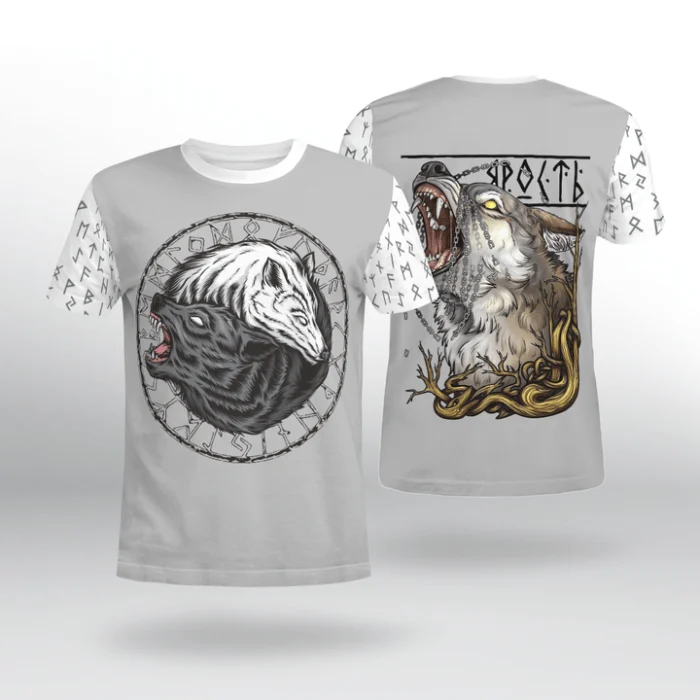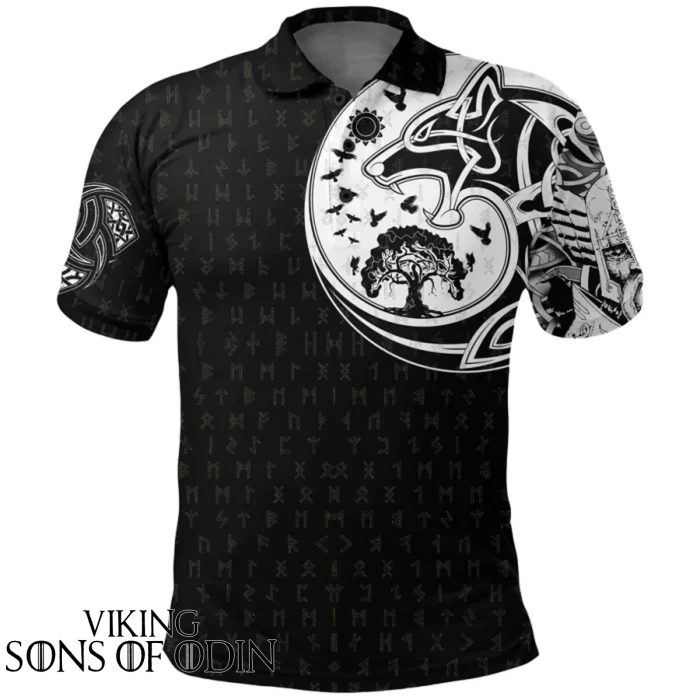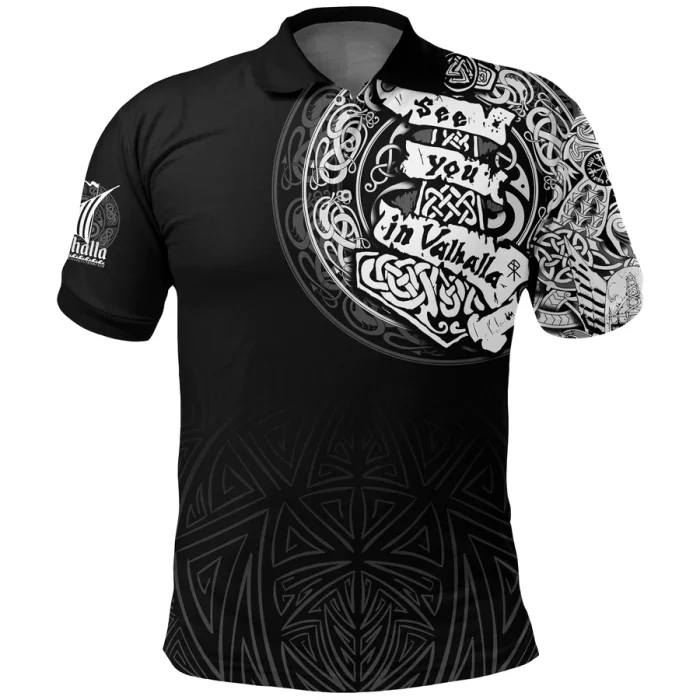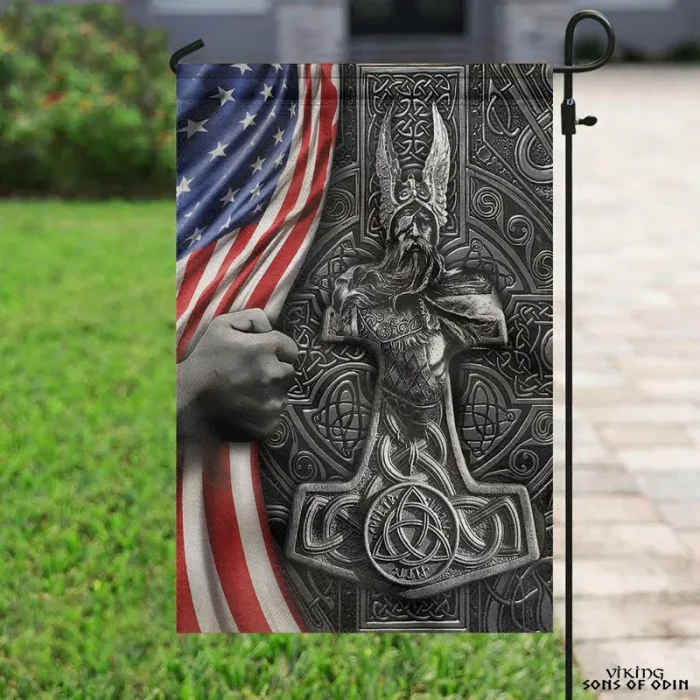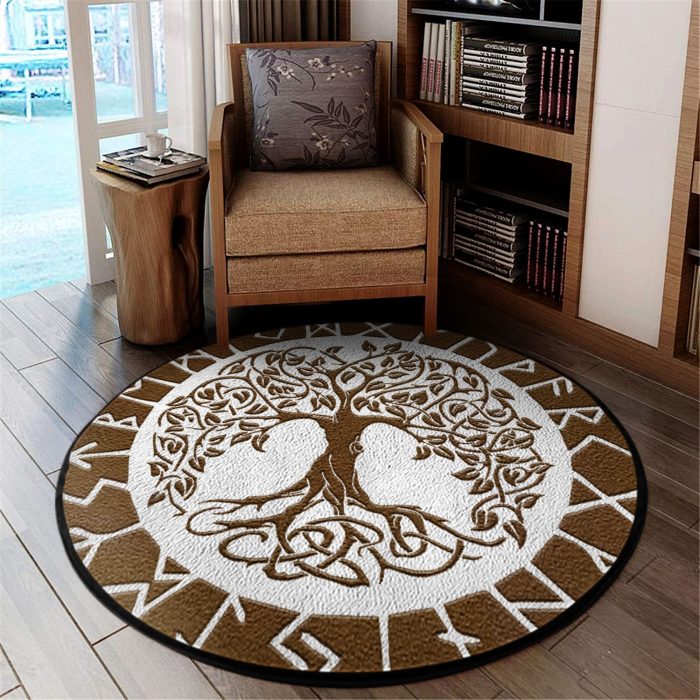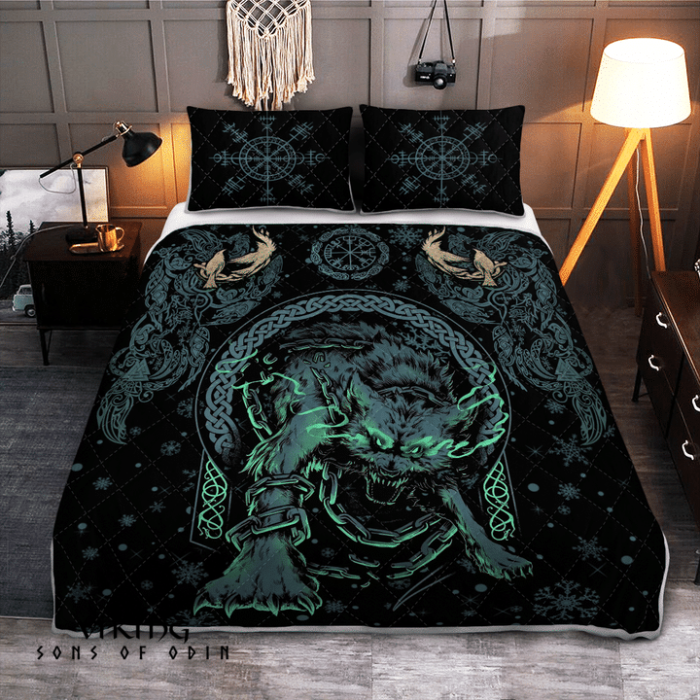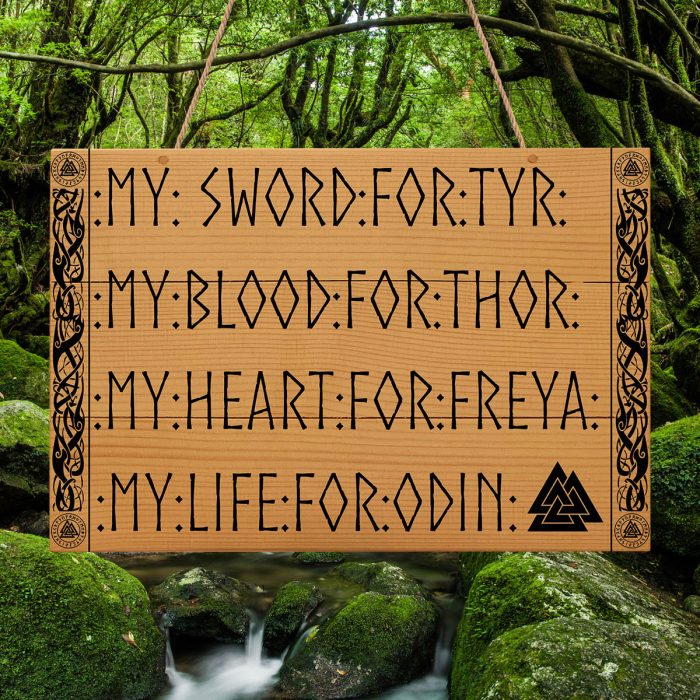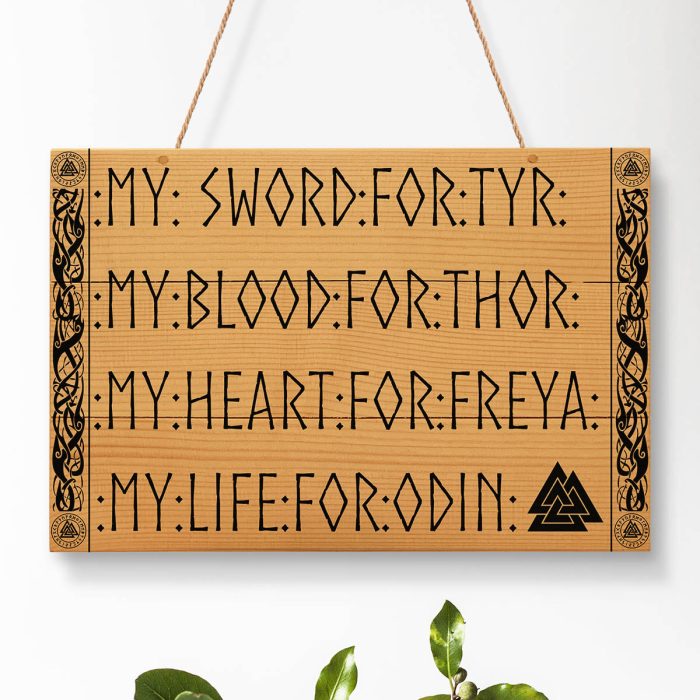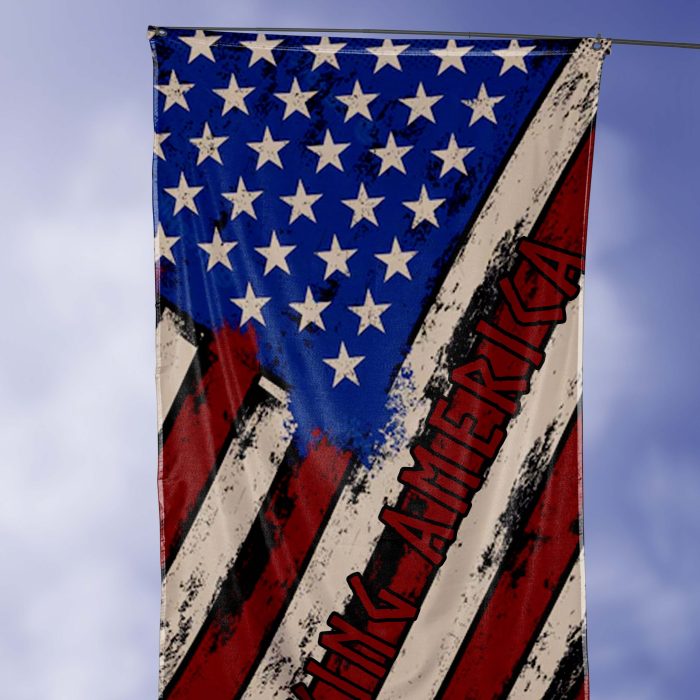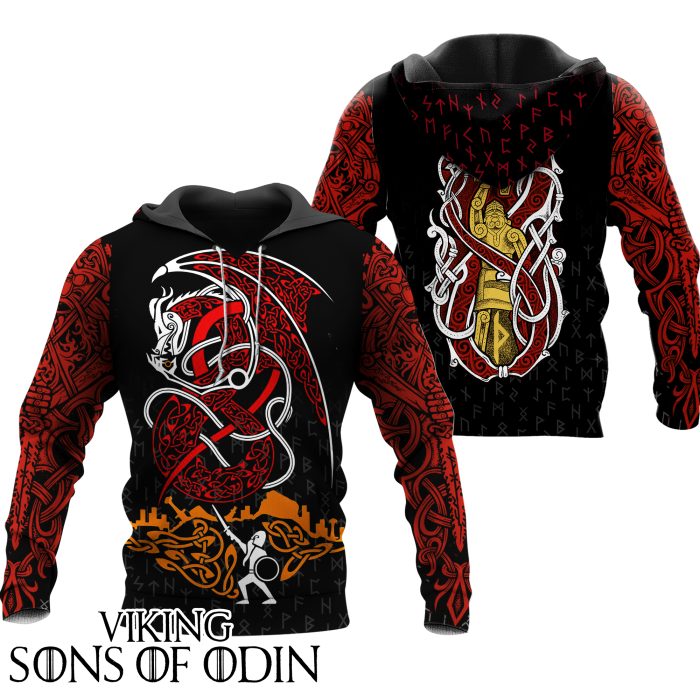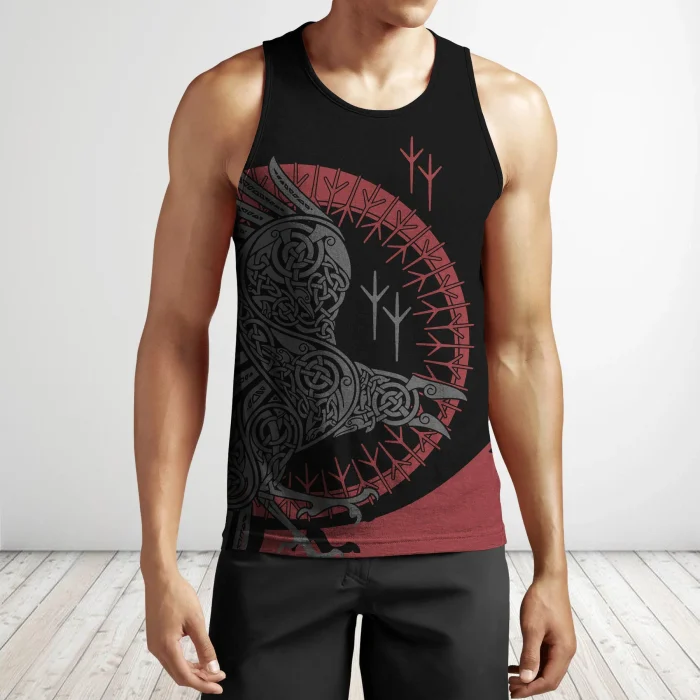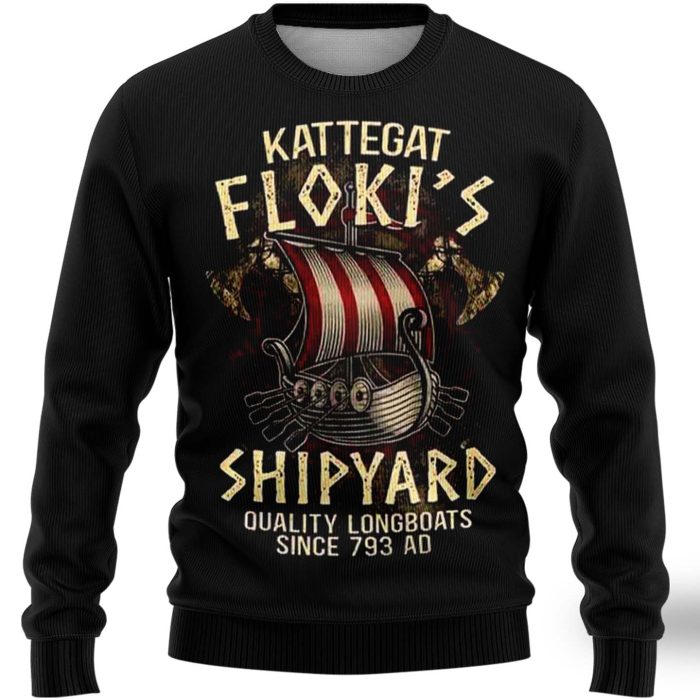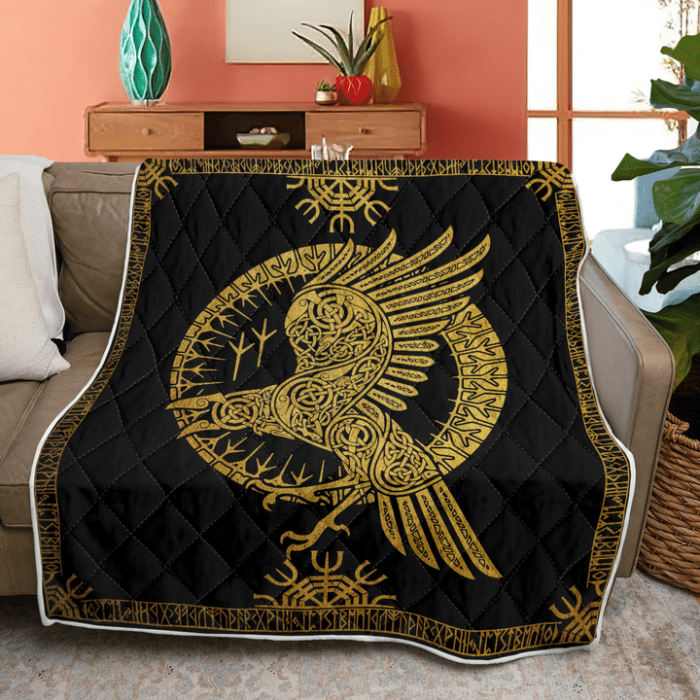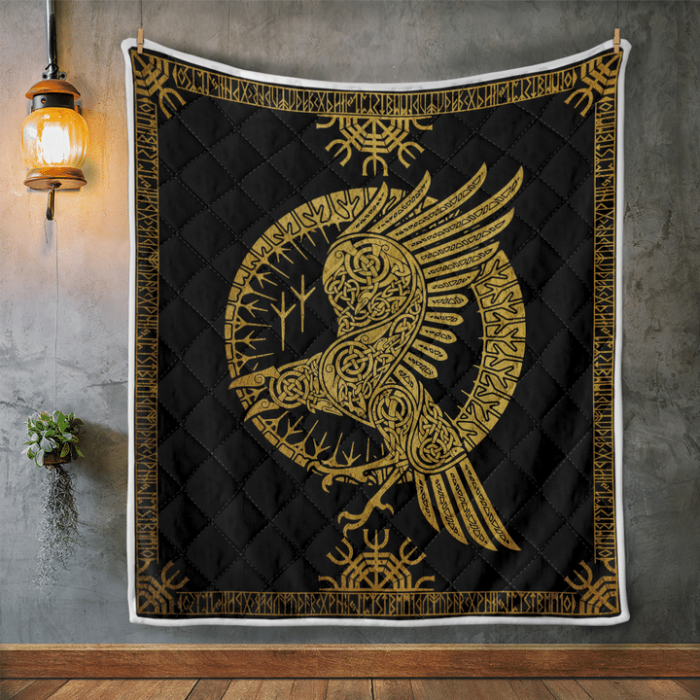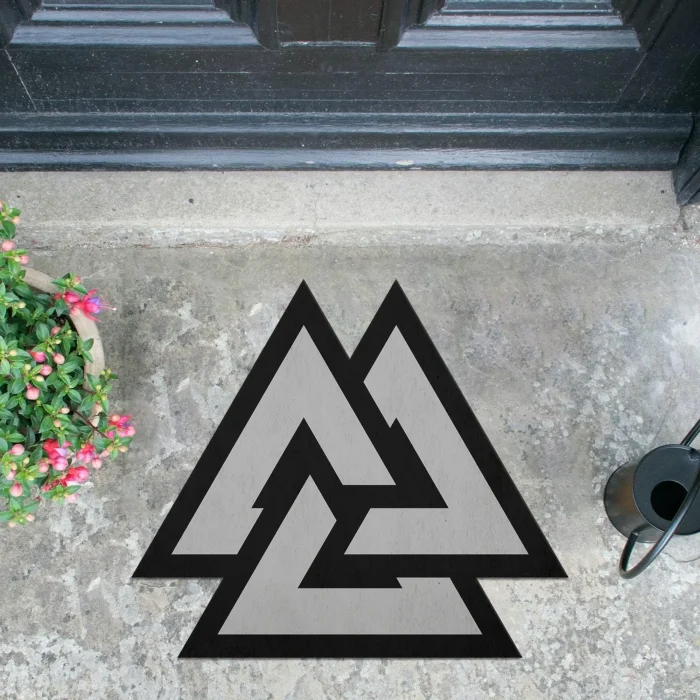Viking
The Vikings – A Glorious Age
This people consisted of many elements from warriors, merchants, pirates, to farmers from the original Scandinavian peninsula (now Finland, Norway, Sweden, Denmark) radiating. different directions from east to west in migratory flows, and eventually spread across Europe creating a glorious age that history has called the Viking Age.
When it comes to Vikings, people are most impressed with the role of warriors and pirates. With skilled seafaring skills, the Vikings built longboats made of oak wood. According to National Geographic, this boat is designed with compartments containing large rocks placed on both sides of the boat to keep the vehicle balanced in the face of storms, combined with weapons compartments on both sides.
In sturdy oak boats, the Vikings sailed across the seas of Europe. To the rich lands, they stopped to invade and plunder. The waves of Vikings continued to spread from Northern Europe in all directions, to settle in newly conquered lands in England, France, the Baltic Sea, Russia to the Iberian peninsula (today Spain, Portugal). Nha), even crossed the Atlantic Ocean to the Americas 500 years before the explorer Christopher Columbus, but today traces are still left in Canada.
The Vikings left their strongest mark on England and Ireland with their expeditions from Denmark to these lands. While another group from Sweden went on voyages to Russia. The remaining branch of the Vikings from Norway traveled to Scotland, Iceland and the island of Greenland (Denmark).
The villages that the Viking groups initially established throughout Europe later became the medieval nations of the old continent. According to historical records, the Vikings began their conquests from England in 793 with an attack on the island of Lindisfarn. Then, this people began to occupy England in the period 793 to 850. At one point England had to be divided with the northern part belonging to the Vikings.
Having established strong bases on land, the Vikings began to shift their focus to occupation and plunder, conquering new lands with armed, oarsed oak galleys that gathered into battleships. mighty fleet. Western Ireland and gradually the northern and western coasts of the island were also occupied by Vikings between 795 and 840. Ireland was then completely in the hands of mighty Viking warriors.
From the 10th century, the kingdom of Denmark became powerful (kingdom of the Vikings) with a series of kings from Svend Tveskæg to Knud II occupying England, until 1066 when the Viking dynasty came to an end.
Western Europe also fell victim to Viking conquests, starting with the Danish king Godfred attacking the trading port town of Reric in the southern Baltic Sea. After facing a counterattack from the king of this land, Charlemagne, the Vikings withdrew. In 810, the Danish Vikings sent their ships to Friesland (Netherlands) to plunder. Later kings of this ethnic group such as Horik, Sigfred or Chief Rollo continued to promote the “tradition” of mobilizing armies of warships to kill the lands that are now France and Germany. The descendants of this ethnic group then continued to attack southern European regions such as Italy, as far east as Eastern Europe as Russia, or spread to other lands such as North Africa, West Asia, An example is the city of Jerusalem.
The Viking armies were so strong that there was a time when one group of Vikings and another group of Vikings could fight each other.
The most prominent in Viking anecdote is the ability to assimilate culture (this can be seen in other peoples such as the Han or the Mongols). To this day, many old English words still have their roots in the Scandinavian language (where the Vikings originated).
One of the most prominent anecdotes of this people is that in 911, the then French king Charles III had to bite his teeth to cede part of the kingdom to the Danish Viking chief Rollo so he agreed to help drive out a group of Vikings. other.
The land ceded to the Vikings at that time is now the French region of Normandy (the name Normandy means land of “men from the north”, located in northwestern France). This land is located across the English Channel (English Channel) where northern England at that time was in the hands of the Vikings.
Earlier in 845, the Viking leader then Ragnar attacked Paris (France) with a fleet of 120 ships from the North Atlantic up the Seine to Paris. Panicked with the military might of this ethnic group, the French king at that time, Charles II, had to bring an amount equivalent to 50 million USD (at current prices) to this warship so that they could withdraw.
Thus, the spoils is what the Vikings are aiming for: conquering rich lands —> occupying as a place to set up bases —> from new places to continue conquering war ships —> robbing the booty is gold money —> withdrawn if tribute. To the Vikings, the tribute (they called Danegeld – Dane’s ransom) was extremely important.
According to the sketches of Viking men as warriors traveling on boats to conquer in movies and folk legends, they are tall, muscular people with beards and beards. Iron helmets when storming into battle, holding iron swords and carrying irons proudly standing on oak warships gliding through the seas, when they see a “rich” land, they will pull over and land on the shore to fight. occupied, plundered, forced the people of that area to pay tribute. The terror caused by the Vikings quickly spread throughout Europe because of the location of this old continent on three sides, bordered by the sea.
If the Mongols’ hooves roamed the mainland in the east, the Vikings made the western seas “raise”. When going to battle, only the commander used a sword, the rest used an ax or a sharp spear.
Recently in October 2015, CNN reported that a Norwegian man named Goran Olsen while climbing the mountain suddenly picked up an ancient sword, 200km from the capital Oslo. When analyzing the date, the sword is said to have been forged about 750 to 800 years ago, coinciding with the Viking era when the wars of this people began.
In mid-2016, an exhibition titled “Viking-era artifacts found in Estonia” was held, which attracted great attention from the public. The exhibition displays artifacts unearthed by archaeologists in the country to date, showing that Estonia was once an important stop on the road of conquest and trade connecting Northern Europe and the Arabian region. Arab of this people (many Vikings among them were merchants). According to National Geographic, Estonia is on the road to Eastern Europe, going towards Russia by the Vikings.
According to current knowledge, the story of the Viking age begins in AD 793 when the Norwegian Vikings first launched their attack on England. But according to the latest research by three archaeologists from Aarhus University (Denmark) and York University (UK), this ethnic group has had a more peaceful approach before by sea voyages trade from Norway to the Ribe, the oldest trading center of Denmark at the time. Accordingly, they came to the Ribe in the years 725 AD, before the milestone 793, the year of the British attack many decades ago. Artifacts are the ribs of Norwegian deer (deer antlers) were found here.
Sciencenordic.com quoted Professor Søren Sindbæk, one of the study’s authors as saying: “This is the first time we have demonstrated that seafaring culture, which was the foundation of the human era Vikings, had a long history in the Ribe.” The question of whether Ribe was an early cultural center of the Vikings is being studied intensively by archaeologists.
Accordingly, the sea voyages between Norway and Denmark allowed the Vikings to develop their navigational skills and expand their geographical knowledge necessary for future conquests, such as the attack on the Pacific Ocean. Lindisfarne monastery, northern England in 793 later.
Professor Sindbæk emphasized: “The Viking Age became a phenomenon in Western Europe because the Vikings learned to use the mobility of maritime traffic to their advantage. They learned how to cross the sea to the shores of England, quickly plunder from unprepared victims, and then quickly escape.”
It was a long process to mature in combat technique: Vikings did not become professional soldiers overnight. According to Sindbæk, it took a great deal of time, effort and resources before they accumulated the knowledge and technology to make these long and dangerous expeditions. There is a connection between the development of Viking shipbuilding techniques and the urbanization along the European coast that led to raids on the trading ports of this people.
Bandits or merchants come first?
That is the question posed today about the Vikings. Recent research results show that the Vikings’ merchants were first to pave the way in the 8th century with the introduction of a trading market in the Ribe. The development of this town was directly linked to the settlements.
Professor Sindbæk emphasized: “We can now show that the famous sea voyages from Scandinavia, which led to the discovery of Iceland and Greenland, have a history of going back to commercial voyages and not only attacks. Thanks to commerce, they have the process of accumulating and developing technology to conduct sanctions later.”
A look at the unearthed archaeological artifacts are deer antlers, which were commonly used in the manufacture of hair combs, one of the earliest known industries that showed an urgent need for the material at the time. (deer antlers) came from remote areas in the North where the Vikings were the main source.
Recent research shows that the early Vikings from Norway exploited readily available raw materials that were easily sold in bulk weekly to collectors in the Danish trading port. “The Vikings knew they had one purpose in their journey to supply the market with ingredients, not to plunder,” Sindbæk says. In this way, they contribute to the development of the city.” The early Vikings arose from trade.
The March 2017 issue of National Geographic in the article “New Perspectives on the Vikings” carefully analyzed this unique boat. Accordingly, a fleet of their assault ships could include 250 boats or more. These boats have the common feature of being sturdy, light and flexible.
The material to make them is oak. The Vikings chose tall oak trees that grew wild in the forest with a large trunk circumference, and cut them into wooden planks to assemble into a complete boat.
This boat has a curved tail at both ends, on both sides of the boat there are weapons compartments that are crushed stones into smaller stones, which act as bullets that are used to launch at enemies with a rack system. . The boat is long enough to have enough space for the members, the sides of the boat are seats equipped with oars for the sailors to row. The middle of the boat is equipped with a mast to catch the wind. With this mobile warship, the Vikings sailed everywhere to attack the trading ports.
Author Heather Pringle wrote in the March 2017 issue of National Geographic that in many parts of Europe today, people still hold annual festivals to commemorate the past, during the Viking occupation. At festivals, people dress up as Viking warriors with hats, armor, and costumes and then organize to fight each other through simulated battles.
The festival, called Up Helly Aa, is held every year on the island of Shetland in the north of England. People dressed up as Vikings, walking together in groups representing fleets, poured into the streets to march. 1200 years ago, the first Vikings landed on the rocky shores of this island. For the next seven centuries, Norwegian Viking kings ruled the island before it was returned to the Scottish kings.
The history of the Vikings here is re-enacted as the crowd sings of songs about “sea kings” and dragon ships (Viking ships). The people’s admiration for this ethnic group will probably never end.
Today with the rapid development of technology, a multi-faceted picture of the Vikings is being reconstructed. In Estonia, scientists are studying Viking ships to understand the origins of this people’s violence. In Sweden, researchers learn about the remains of female Viking warriors. In Russia, research groups are moving in the direction of learning about the history and travel routes of the slave traders and the importance of slavery in Viking society. National Geographic quoted Jimmy Moncrieff – historian in Lerwick as saying: “This is the era at the forefront of research on Vikings”.
According to archaeologist Neil Price at Uppsala University (Sweden), scientists have determined that this ethnic group has visited more than 37 countries, from Afghanistan to Canada. Along the way, the Vikings made an impact and left a bold mark on 50 cultures. No tribe in Europe has had a fearless spirit and has traveled far from the motherland as much as the Vikings.
In 2008, during the maintenance of the undersea fiber optic cable, many human skeletons and warrior swords were discovered on the seabed. “This is the first time archaeologists have unearthed artifacts from a Viking raid,” Price said.
More surprisingly, according to National Geographic, scientists also discovered the remains of the bodies of Viking warriors in Salme. Estonia, died 50 years before the first Viking raid on Lindisfarne monastery (England) in 793, the milestone that historians today agree on is the “opening” year for the era. Vikings
More than the actor Johnny Depp in the Pirates of the Caribbean, Viking leaders painted their eyes, wore colorful outfits, and wore bulky jewelry to increase their majesty. From the earliest times, they targeted looting in the major trading ports or coastal monasteries. The raids are usually planned in the summer months when the cold is over. Each time they attacked, they used hundreds of people to suddenly rush in and promptly withdraw before the people where they were attacked could respond. Many precious antiques including gold rings, jewelry, handicrafts, furniture and even slaves returned from their punitive voyages.
The sudden, violent and bloody attacks of the Vikings prompted archaeologist Neil Price to say in National Geographic: “If you lived in northwestern France at the end of the 9th century (the place was inhabited by humans) Viking attack), you would think this world is coming to an end”
Not only did they panic throughout Europe, today scientists have also discovered that the Vikings were the first people to sail along the ocean currents to the Americas (New World), but the remains are scattered tree clusters. look like dug, grass-covered creeks in southwestern NewFoundland (Canada).
So far, the destruction of the Vikings is still a great mystery without an answer like the disappearance of the Maya civilization or the city of Atlantis. There are many theories put forward, notably the possibility of climate change, called the “Little Ice Age” period when there was a period of record-low temperatures in Northern Europe. But will a mighty people like Viking easily perish for this reason?, why don’t they sail to Southern Europe to avoid the cold? That is a mystery that is still waiting for future research to solve.
Translation and editing : Viking Sons Of Odin


